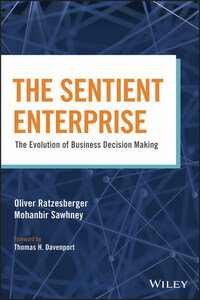Cover image: © KTSDESIGN/SCIENCE PHOTO LIBRARY/Getty Images
Cover design: Wiley
Copyright © John Wiley & Sons, Inc. All rights reserved.
Published by John Wiley & Sons, Inc., Hoboken, New Jersey.
Published simultaneously in Canada.
No part of this publication may be reproduced, stored in a retrieval system, or transmitted in any form or by any means, electronic, mechanical, photocopying, recording, scanning, or otherwise, except as permitted under Section 107 or 108 of the 1976 United States Copyright Act, without either the prior written permission of the Publisher, or authorization through payment of the appropriate per-copy fee to the Copyright Clearance Center, Inc., 222 Rosewood Drive, Danvers, MA 01923, (978) 750-8400, fax (978) 646-8600, or on the Web at www.copyright.com. Requests to the Publisher for permission should be addressed to the Permissions Department, John Wiley & Sons, Inc., 111 River Street, Hoboken, NJ 07030, (201) 748-6011, fax (201) 748-6008, or online at www.wiley.com/go/permissions.
Limit of Liability/Disclaimer of Warranty: While the publisher and author have used their best efforts in preparing this book, they make no representations or warranties with respect to the accuracy or completeness of the contents of this book and specifically disclaim any implied warranties of merchantability or fitness for a particular purpose. No warranty may be created or extended by sales representatives or written sales materials. The advice and strategies contained herein may not be suitable for your situation. You should consult with a professional where appropriate. Neither the publisher nor author shall be liable for any loss of profit or any other commercial damages, including but not limited to special, incidental, consequential, or other damages.
For general information on our other products and services or for technical support, please contact our Customer Care Department within the United States at (800) 762–2974, outside the United States at (317) 572-3993, or fax (317) 572-4002.
Wiley publishes in a variety of print and electronic formats and by print-on-demand. Some material included with standard print versions of this book may not be included in e-books or in print-on-demand. If this book refers to media such as a CD or DVD that is not included in the version you purchased, you may download this material at http://booksupport.wiley.com. For more information about Wiley products, visit www.wiley.com.
Library of Congress Cataloging-in-Publication Data:
ISBN 978-1-119-43886-1 (Hardcover)
ISBN 978-1-119-43889-2 (ePDF)
ISBN 978-1-119-43879-3 (ePub)
Foreword to The Sentient Enterprise
The Sentient Enterprise is both a good book and a good sign. Let me explain each component of that proclamation further.
It’s a good book because two very smart and experienced gentlemen collaborated to produce some excellent advice on data and analytics. I’ve known both authors for over a decade, and they are, individually and collectively, powerful thought leaders.
Individually, either of these fellows could write an excellent book (and Sawhney has already written several!). Oliver Ratzesberger is one of the most visionary thinkers today on IT architecture issues. I was dazzled by the data architecture he created at eBay, and he’s risen quickly to be the head of product at Teradata. That affiliation doesn’t mean that he only espouses Teradata solutions; he’s long been a strong advocate of open architectures and open-source tools like Hadoop.
Sawhney, trained as a marketing professor, is clearly much more than that. He’s been a leading thinker for many years in the areas of innovation, digitization and e-business, networked organizations, and many other topics. If you were looking for a coauthor to think strategically about technology, you couldn’t find anyone better than Mohan.
Collectively, the authors’ expertise yields a unique set of topics that appeal to both strategists and practitioners – each of whom have an important stake in the journey toward sentience. One moment you’re reading about how the massive explosion of data will reshape business and society. The next thing you know, you’re learning how to prevent uncontrolled proliferation of virtual data marts with time-limited lifespans, or the correlation between call duration and customer sentiment in call centers. No one could accuse these authors of dwelling solely in either the strategic or the tactical realm.
The Sentient Enterprise is also a good sign that analytics are becoming a mainstream, professionally-managed activity – at least if organizations practice the lessons in this book. Historically, the creation of analytics was a somewhat unstructured and “artisanal” activity, driven by individual human hypotheses and curiosity. The analytical outcomes might be implemented by a decision maker, or they might not. There was no vehicle for embedding them into business processes and systems, or for learning from them across the organization.








